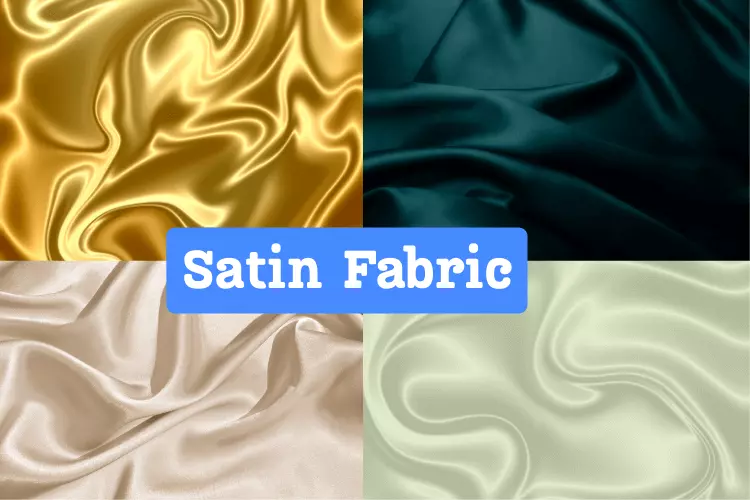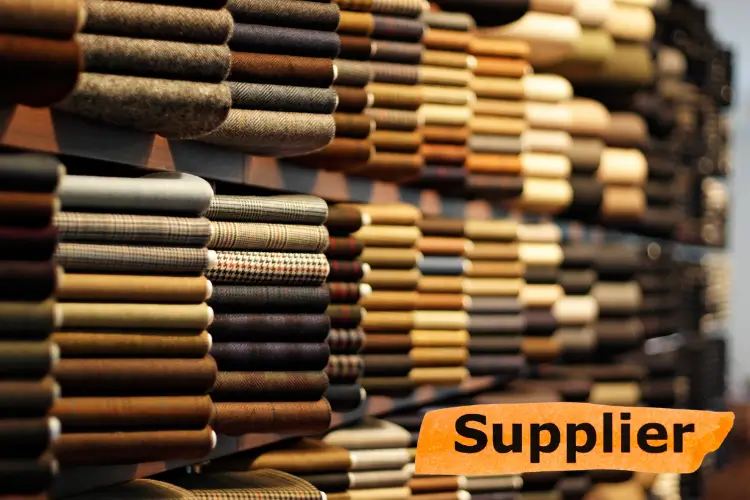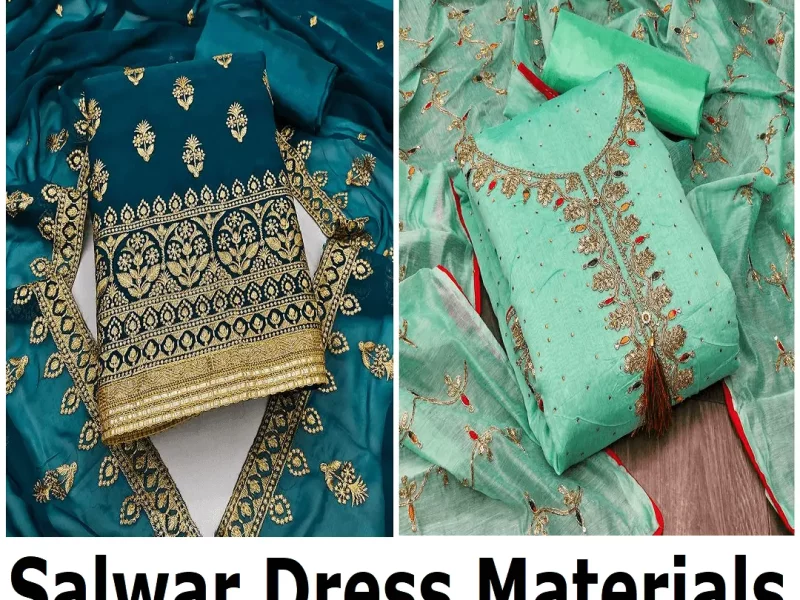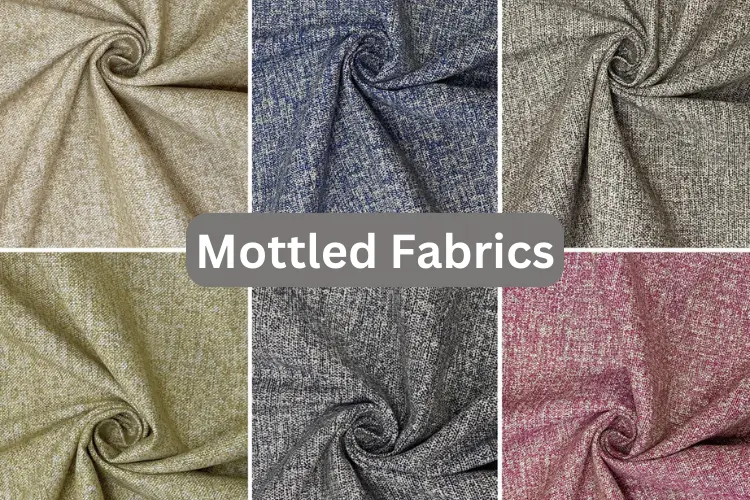Satin fabric is a luxurious and glossy textile known for its smooth and shiny surface. Satin fabric is more than just a material for elegant clothing. Satin is not just for gowns and bridesmaid dresses; it may be produced from a variety of fabrics. Satin describes the weave of the fabric, which gives it a typically smooth, glossy appearance. Satin is used in upholstery and evening bags, among other things. This article will define satin fabric and go over its various varieties, characteristics, and applications. Let’s scroll down.
What Is Satin Fabric?
Satin is defined by how the cloth is weaved rather than what it is made of. It is frequently shiny on one side and dull on the other. Satin weaves are classified into three types: satin, plain, and twill. Long threads float on top of shorter threads in satin. This makes it incredibly gleaming. Long threads are frequently braided on top. However, it is sometimes braided with lengthy threads underneath. Satin is a fabric created from materials such as silk or nylon. It’s termed sateen if it’s constructed of short-staple fibers like cotton. Satin weaves come in a variety of styles, including granite and check weaves.
Satin is a fabric that is used to make lingerie, nightgowns, blouses, and beautiful outfits. It is, however, also used for boxer shorts, shirts, and ties. It’s even employed in the production of ballet shoes. It is also used for home decorations such as curtains and bedsheets.
What Are the Origins of Satin?
During the Middle Ages, satin was made from costly silk. It could only be afforded by the wealthy. Satin gained popularity in Europe around the 12th century. The name is taken from the Arabic term “zayton” used to designate a Chinese city, Quanzhou. In the late Middle Ages, Quanzhou was an important port on the Maritime Silk Road for supplying silk to Europe. It was especially popular in the Arab world.
What Are the Characteristics of Satin Fabric?
Satin cloth is unique due to a few characteristics:
- Shiny surface: The front of the fabric is shiny and silky, while the rear is dull. It appears opulent and has a very soft feel.
- Excellent drape: Satin drapes well, which is why it’s ideal for formal attire and curtains.
- Sturdy and long-lasting: Its weaving technique contributes to its strength and durability.
- Wrinkle resistance: Satin, especially thicker varieties, resists creases better than other fabrics. Yet it also has a few problems:
- Easily snags: Satin threads are prone to being pulled or hooked. Sewing can be challenging because of its delicate and slippery texture, which makes fabric prone to mistakes.
- Smooth Texture: Satin fabric has a smooth and silky texture, contributing to its luxurious feel. The weave used in satin produces fewer interlacings, resulting in less friction between fibers and a softer touch.
- Drapability: Satin is known for its excellent drapability, meaning it flows gracefully and conforms well to the shape of the body. This makes it a popular choice for flowing dresses, gowns, and curtains.
What are the different kinds of Satin Fabric?
There are many types of satin, and they depend on the materials used and the way they’re woven. Here are some examples:
Antique Satin Fabric
Antique satin is a type of satin weave. It uses uneven yarn in the weft, giving it a different appearance on each side. It’s used to manufacture clothing that appears to be from the 17th and 18th century. This cloth is thick and dull. Water and sunlight can quickly ruin it. So you can’t wash it, and you need have it cleaned by a specialist. Because the lining is sewed into the hem, changing the lining can harm the fabric. Antique satin is frequently used in home design. It can be constructed of silk, rayon, or acetate for long threads and cotton or synthetic fiber for short threads. It resembles Shantung or Dupioni cloth and receives its name from because it looks like it’s been made by hand.
Charmeuse Satin Fabric
Charmeuse satin is a light and airy fabric. It is woven using a technique known as satin weave. This weave contains some threads layered on top of others, providing a smooth and lustrous front but a drab back. It differs from conventional satin in that it has more floating threads and is lighter. Charmeuse is available in silk, polyester, and rayon. It is sometimes manufactured from a combination of these elements. It is used to manufacture women’s clothing such as lingerie, fancy dresses, and blouses, particularly bias-cut dresses.
Duchess Satin Fabric
Duchess Satin is a luxurious fabric that is used for bridal gowns and lingerie. It differs from other satins in that it contains more threads. Previously, only the very wealthy could afford it. However, with improved methods of producing cloth throughout the Industrial Revolution, it has grown more popular. Many people now use it to produce gowns and other clothing. It is available in a variety of hues. It’s ideal for bridal gowns, evening gowns, and prom gowns. It’s also great for making elegant gloves for special events. Bridal Duchess satin is a satin fabric that is pleasant to the touch yet has a substantial weight to it.
Poly Satin Fabric
Poly-satin is created through weaving rather than by the materials. Satin is defined as fabric manufactured from filament fibers such as silk or polyester, while some definitions state that it must be made from silk. Polyester satin is appropriate for home décor, clothing, and scarves. It is a woven fabric rather than a raw substance. Poly-satin is smooth, shiny, and glossy on one side.
Common Uses for Satin Fabric
- Fashion Apparel: First choice when we are making Bridal wear, evening gowns luxurious clothing.
- Home Decor: It has use in home furnishing,
- Accessories: Satin is frequently used in accessories like scarves, ties, and handbags. Its ability to hold vibrant colors and provide a polished look makes it a preferred material for these items.
- Costume Design: The theatrical and reflective qualities of satin make it a favorite in costume design for film, theater, and cosplay. It can mimic the appearance of more expensive fabrics, enhancing the visual appeal of costumes.
FAQ’s
What Makes Satin and Sateen Fabric Different from One Another?
Sateen is a type of fabric with a unique weave pattern and short fibers. Sateen is made from short strands, like cotton, as opposed to long, smooth fibers, like silk. Cotton sateen is the fabric made when these short cotton fibers are sewn in a certain manner.
What Makes Silk and Satin Fabric Different from One Another?
Similar to cotton or wool, silk is a substance. Satin can be woven with this material to give it a glossy, smooth look. As a result, silk can be used to create other kinds of fabric in addition to satin. Moreover, satin is not just made from silk; it may also be made from other long, silky fibers.
How to Maintain Satin Fabric Cloth?
The materials used to make satin fabric determine how to care for it. You can wash it at home if it is made of cotton or synthetic materials. However, if it’s made of silk, dry cleaning is required. The following advice can be used to clean satin at home:
- Hand wash or use a light detergent and cold water on the soft cycle.
- Avoid hanging or wringing out satin since it is prone to loosing its form.
- Instead of placing it in the dryer, lay it flat on a clean towel to dry.
Conclusion
Satin fabric is appreciated worldwide for its elegance and flexibility. Nowadays people feel very comfortable wearing this fabric for any party starting from a wedding ceremony. Because this fabric has a noble touch. Which can make the beauty of any ordinary person extraordinary. And satin fabric is also very comfortable to wear. So you can feel free to choose this fabric for any garment making. Hope you benefited from our article. Thank you very much for being with us.




